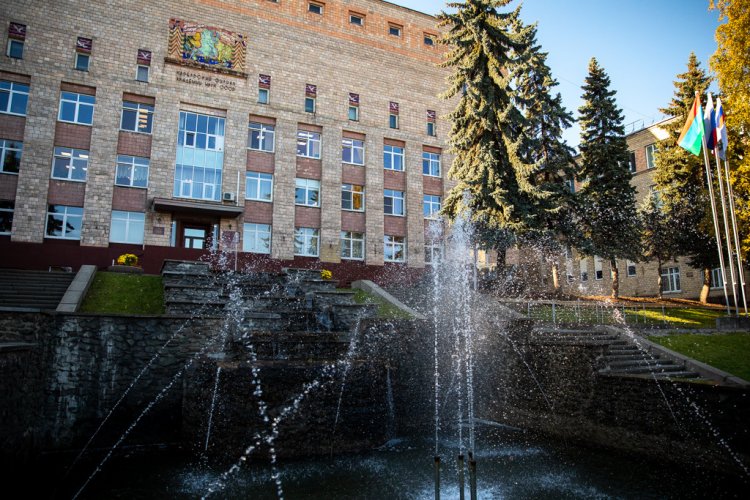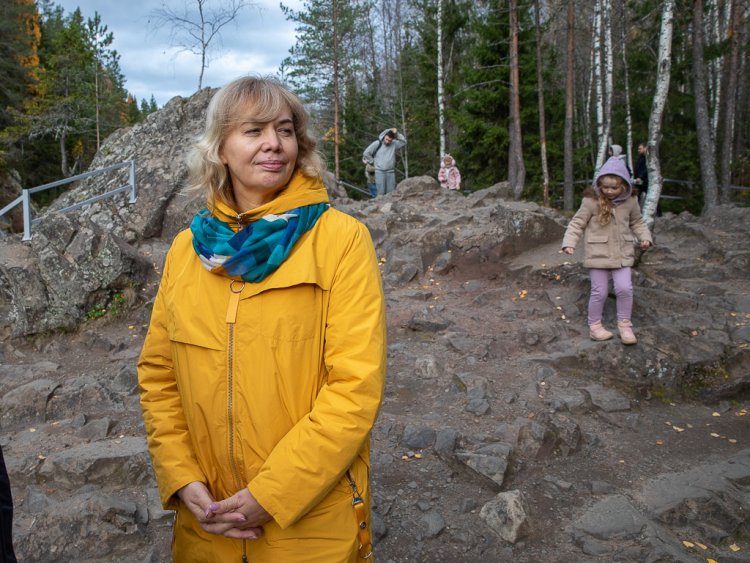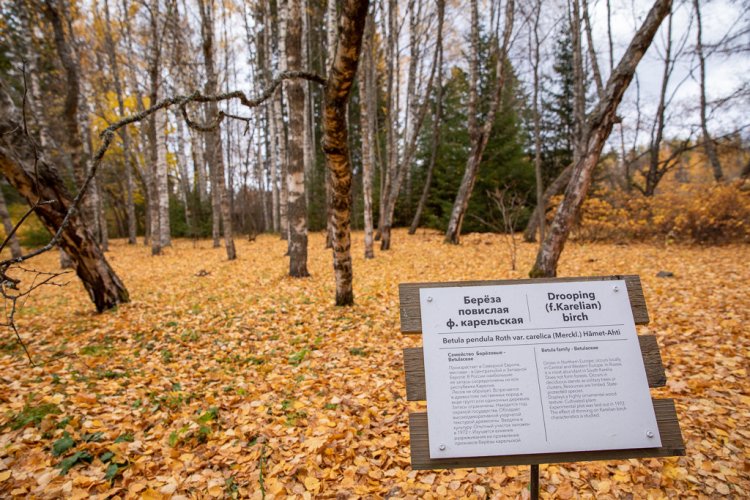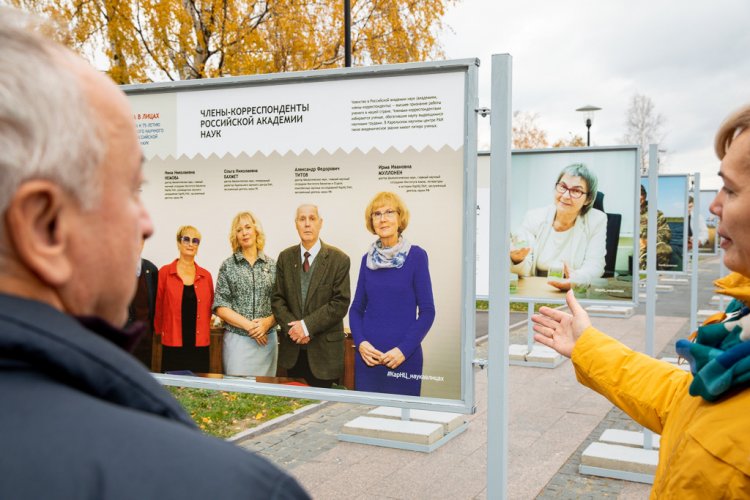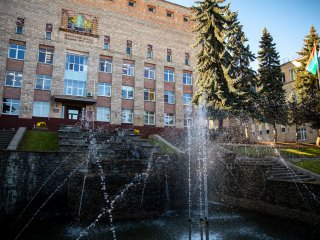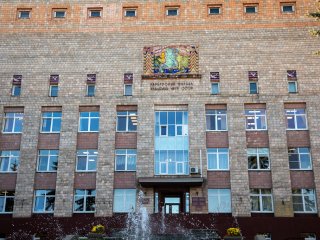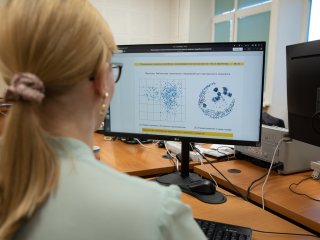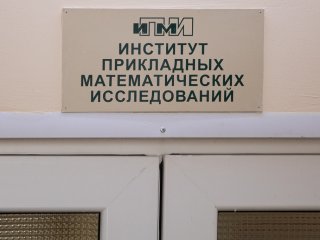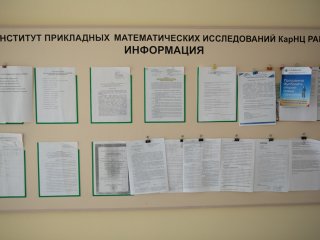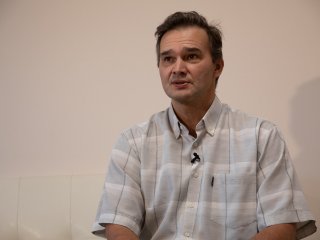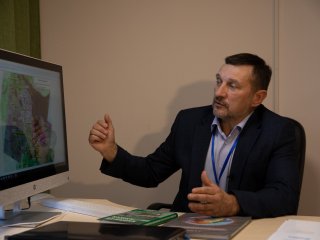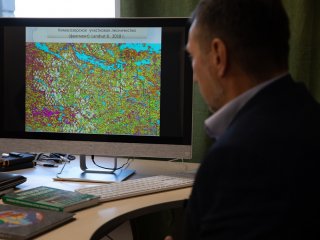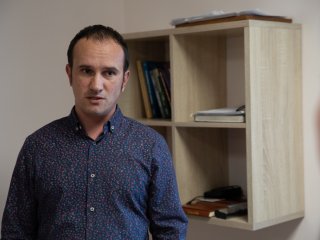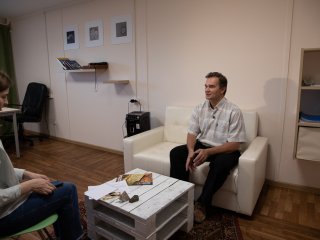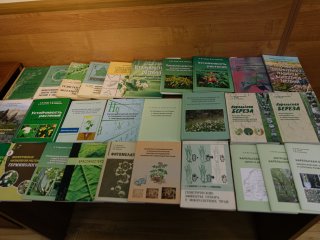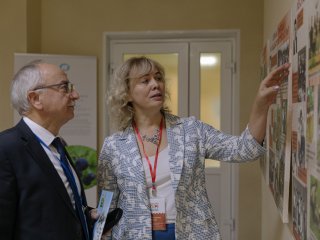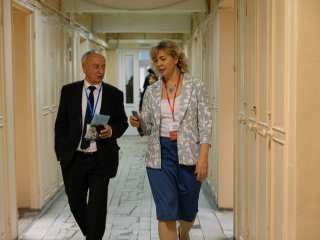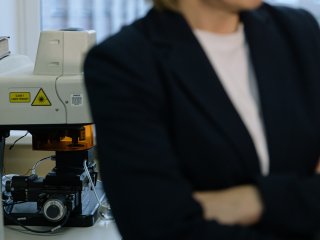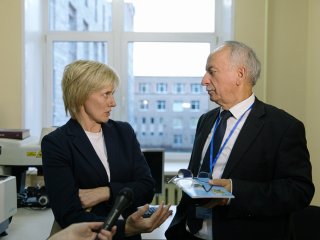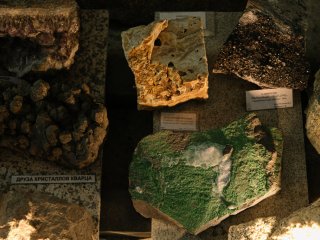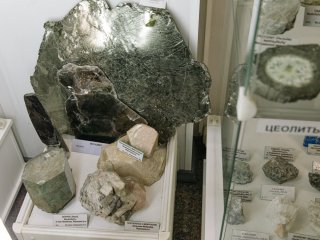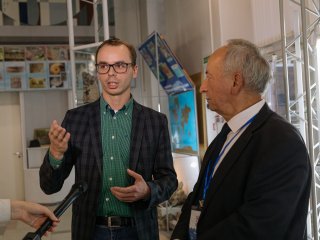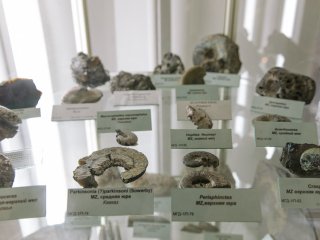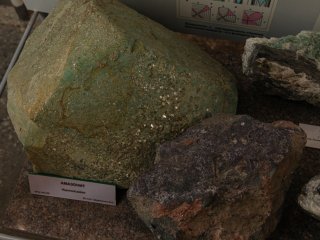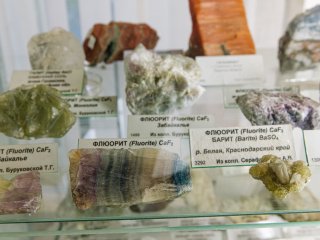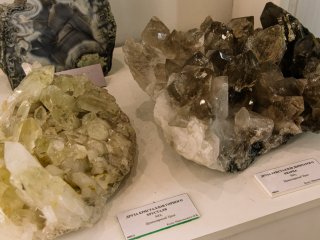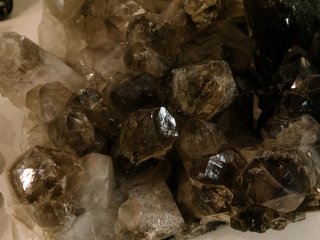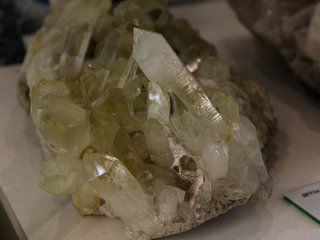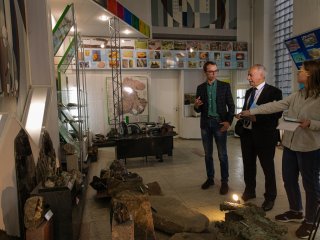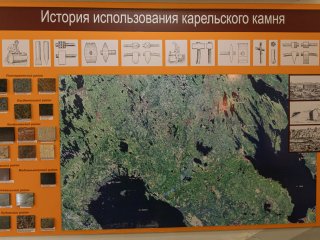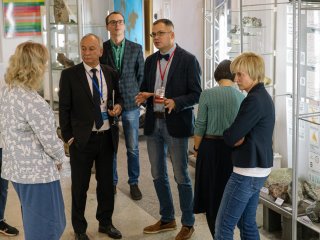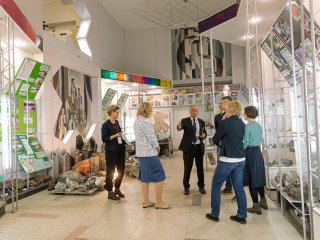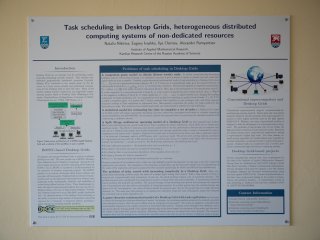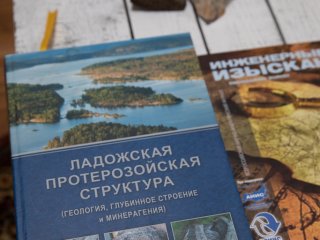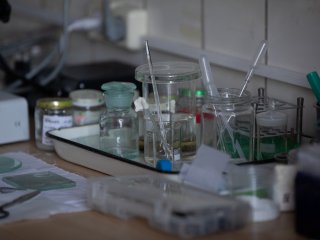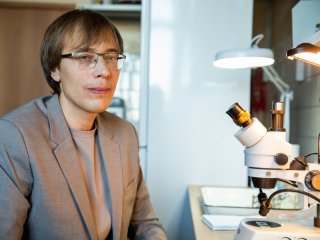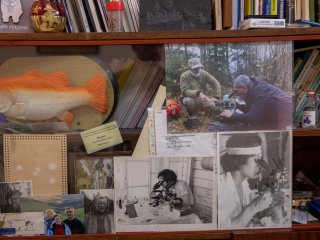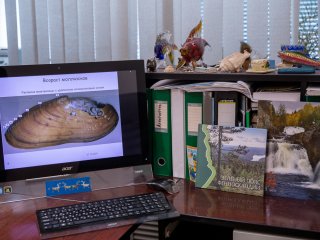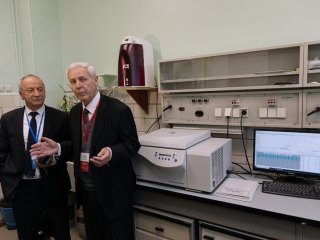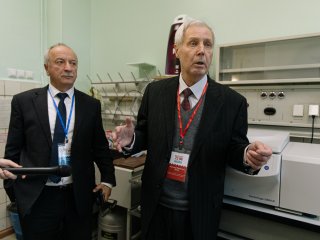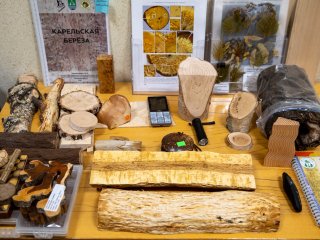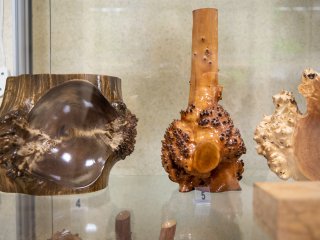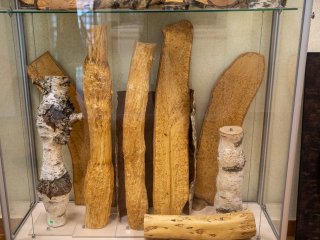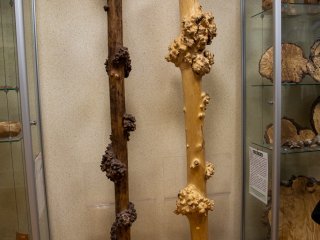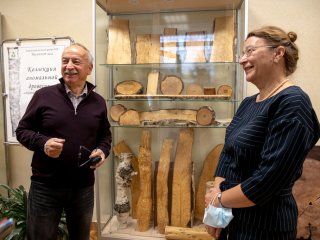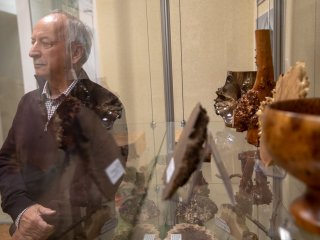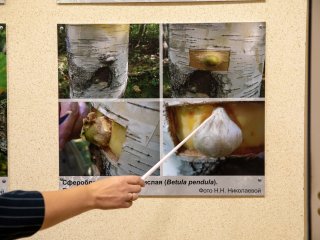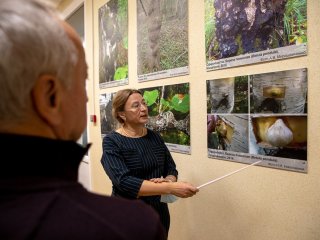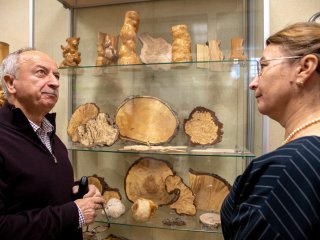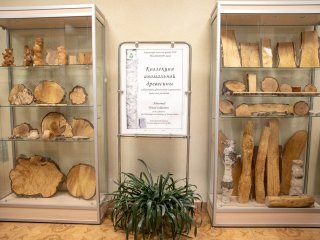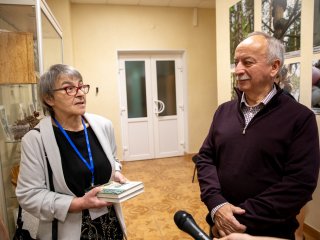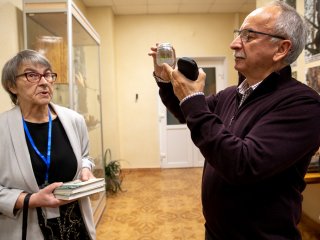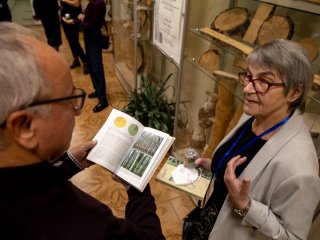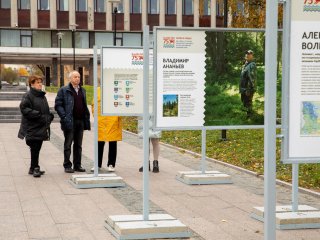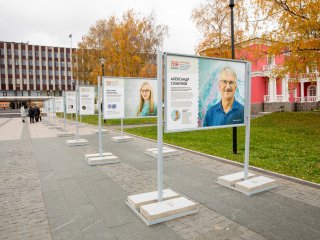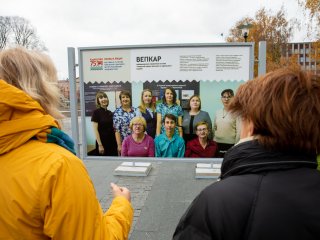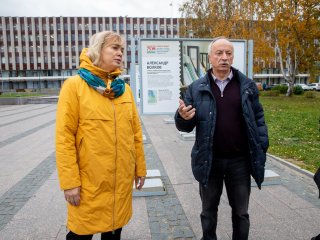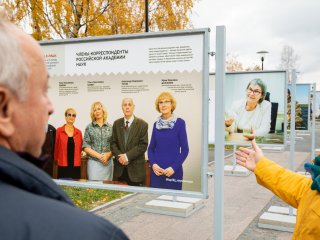Karelian Research Center of the Russian Academy of Sciences. Photo: Nikolay Mokhnachev / Scientific Russia
In 2021, the Karelian Research Center of the Russian Academy of Sciences located in the north of Russia, in the Republic of Karelia (Petrozavodsk), celebrates its 75th anniversary.
The north of the republic is where the boundary of the polar circle goes. Karelia is best known for the scenic outdoors and inexhaustible scientific potential. Who has not heard about the enigmatic Karelian birch, Karelian petroglyphs, ancient volcanoes, countless lakes and large waterfalls of Karelia? And this is just a short list of all the unique treasures of the region.
Scientific Russia presents a series of articles about the Karelian science and natural riches of the republic. Our first article is dedicated to the scientific citadel in the region ─ Karelian Research Center of the Russian Academy of Sciences.
Background
The academic pursuits in Karelia date back to the 18th and 19th centuries and later times, of course. Back in the day, the presidium of the Karelian Research Center (earlier, Karelian Complex Research and Development Institute) included such distinguished scholars, as A.Ye. Fersman, one of the founders of geochemistry, N.Ya. Marr, a most prominent science promoter and philologist, D.V. Bubrikh, one of the fathers of the Russian Finno-Ugric studies, and many other researchers. It is commonly believed that the Karelian Research Center was founded on 31 January 1946, when the Presidium of the Academy of Sciences of the USSR approved the establishment of the academic base in Karelia, its structure and leadership.
Since March 2017, the Karelian Research Center of the Russian Academy of Sciences has been headed by Olga Nikolayevna Bakhmet, Dr. Sc. in Biology, corresponding member of the Russian Academy of Sciences. Photo: Nikolay Mokhnachev / Scientific Russia
From the very moment of its establishment, all studies conducted by the Center were comprehensive. Earth sciences, linguistics and ethnography, animal and plant studies and many other areas were organically introduced from many different angles. Such eclecticity is typical of the Karelian Research Center to this day. Today, the Karelian Research Center of the Russian Academy of Sciences includes the Department of Comprehensive Research and seven institutes: Institute of Biology, Institute of Geology, Institute of Forest, Institute of Water Problems of the North, Institute of Applied Mathematical Studies, Institute of Economics, Institute of Language, Literature and History.
Scientific Russia talked to leading researchers of the Karelian Research Center of the Russian Academy of Sciences and learnt about the most interesting studies carried out here.
Science Needs a Comprehensive Approach
The Department of Comprehensive Research of the Karelian Research Center of the Russian Academy of Sciences accounts for almost fifty scientists: climate researchers, mathematicians, physicists, economists, geographers and many other specialists. For five years straight, this Department has served as a platform and starting point for in-depth interdisciplinary research, including international research.
“Karelia can be viewed not only as a separate Russian region, but also as a territory manifesting cross-border phenomena: natural, economic, political, environmental. Our region has its own specifics, as we neighbor on the EU member countries, including Finland. Therefore, establishment of such a comprehensive Department and search for a new methodology to study and describe these cross-border processes was very important for us. The Arctic Zone of Russia passes through Karelia, which means we should be especially careful in our explorations of natural and social processes taking place in transition from one zone to another,” Pavel Ryazantsev, Senior Researcher of the Department of Comprehensive Research, Karelian Research Center of the Russian Academy of Sciences, said.
The Department of Comprehensive Research includes five divisions. The main avenues of research are support and development of promising areas of interdisciplinary research, comprehensive assessment of the natural regions, development of mathematical models of the natural ecosystem dynamics and geoinformation models of natural, man-made and socio-economic processes and more.
Scientists of the Karelian Research Center of the Russian Academy of Sciences tell about the work of the Department of Comprehensive Research.
From the Barents Sea to the Baltic Sea
The Karelian Research Center of the Russian Academy of Sciences is a regional coordinator of The Green Belt of Fennoscandia (GBF), an environmental project bringing together border areas of Russia, Finland and Norway.
“The Green Belt of Europe, and of its part, Fennoscandia, is an environmental framework of areas for preservation of the natural heritage. The Karelian Research Center of the Russian Academy of Sciences has been making some major systematic efforts in this area for more than 30 years and this is why, in 2020, it was selected a second time as the coordinator of the largest part of Europe’s Green Belt,” Olga Bakhmet, Director General of the Karelian Research Center of the Russian Academy of Sciences, says.
With the natural area along the former iron curtain closed for a long time, it preserved valuable, unique natural landmarks, including pristine forests, meadows and swamps with a large variety of plants and animals.
Scientists of the Karelian Research Center of the Russian Academy of Sciences prepared scientific substantiations for virtually all protected areas of the region created over the past decades and gathered an extensive database about natural regions of the Green Belt of Fennoscandia and its heritage. Today, as before, the main objectives of the project are to study and preserve the natural, ecological and cultural heritage of these territories.
PCR for Plants
The Laboratory of Environmental Phytophysiology of the Institute of Biology, Karelian Research Center of the Russian Academy of Sciences, uses PCR to explore the impact of different factors on the activity of certain genes and their groups. As a rule, dozens or more genes are responsible for each specific reaction in the plant organism. Scientists use PCR-based diagnostics to explore unlocking of the hereditary genetic potential, for which these specific genes are responsible and, in particular, how all of this is activated during the plant reaction to exposure to adverse environmental factors.
For reference: Polymerase chain reaction (PCR) is a method of molecular biology used to rapidly make copies of a specific DNA paragraph from an original sample, allowing scientists to amplify it in a sample by several orders of magnitude.
“This method invented by American scientists in 1983 made a sort of methodological breakthrough in science. Such diagnostics allows researchers using ferments to get the required amount of any DNA elements in a large number of copies. In medicine, it means that we can determine only a few molecules of the pathogen’s DNA. […] Figuratively speaking, the melody of life, if genes are akin to the piano keys, is played on different keys. There are many of them and they are switched all the time: some keys fade away, others on the contrary take their place. So, we are trying to understand this complex range of sounds, using up-to-date methods at the intersection of biology, biochemistry, biophysics, etc.,” Alexander TITOV, Head of the Laboratory of Environmental Phytophysiology of the Institute of Biology, Karelian Research Center of the Russian Academy of Sciences, Principal Researcher of Environmental Monitoring and Modeling of the Department of Comprehensive Research, Karelian Research Center of the Russian Academy of Sciences, Corresponding Member of the Russian Academy of Sciences, said.
Alexander TITOV, Corresponding Member of the Russian Academy of Sciences, Head of the Laboratory of Environmental Phytophysiology of the Institute of Biology, Karelian Research Center of the Russian Academy of Sciences, Principal Researcher of Environmental Monitoring and Modeling of the Department of Comprehensive Research, Karelian Research Center of the Russian Academy of Sciences, tells about PCR-based diagnostics of plants.
To Unravel the Mystery of the Karelian Birch
The Karelian birch (Betula pendula var. carelica) with its one-of-a-kind patterned texture in wood can be rightly named one of the region’s major gems. With its design reminding of marble, it is considered to be the most decorative wood in the north and is very expensive. The Karelian birch does not form any forests and is found in singles or in groups solely in Europe, or more precisely in the Baltic region: in Finland, Sweden, Poland, Belarus and, of course, in Russia. It has recently been discovered in Norway, Baltic States, Denmark, and Germany. In our country, largest numbers of the Karelian birch are found in the Republic of Karelia.
“No doubt that the genetic control and the ability to form a patterned texture in wood are hereditary (and not an anomaly!), but the mechanism remains a mystery. Even if the entire genome is mapped, you won’t be getting all answers at once,” Lidiya Vetchinnikova, Principal Researcher of the Laboratory of Forest Biotechnologies, Institute of Forest, Karelian Research Center of the Russian Academy of Sciences, Dr. Sc. in Biology, said.
Among other key questions about the Karelian birch, which remain to be unresolved, she mentioned the origin of the Karelian birch and its taxonomic status, the author’s opinion of which has already been submitted for debate in recent research articles.
Karelian birch at the Kivach arboretum. Photo: Nikolay Mokhnachev / Scientific Russia
In its habitat, the Karelian birch is on the verge of going extinct. With the clonal micropropagation, which scientists of the Karelian Research Center of the Russian Academy of Sciences have been employing since the 1990s, they preserve unique characteristics and properties of this unusual tree. Every year, scientists and volunteers plant out dozens of new transplants not only in Karelia, but also in other Russian regions.
This year, Karelia formed Russia’s largest experimental production collection of clones of the Karelian birch obtained by means of the clonal micropropagation. It is also unique from the viewpoint of the geography of original trees, as it includes 32 genotypes of the Karelian birch from different parts of its habitat.
Lidiya Vetchinnikova, Principal Researcher of the Laboratory of Forest Biotechnologies, Institute of Forest, Karelian Research Center of the Russian Academy of Sciences, Dr. Sc. in Biology, told Yu.Yu. Balega, Vice President of the Russian Academy of Sciences, about unique properties of the Karelian birch, which confirm the appropriateness of its consideration as an independent species.
Collection of Abnormal Wood
The Collection of Abnormal Wood of the Karelian Research Center of the Russian Academy of Sciences accounts for over 1,400 most diverse (from small cross-cuts to fragments of the tree trunk with roots) samples from all continents with trees, bushes or woody vines: Australia, Africa, Eurasia, North and South America. The collection includes a wide variety of samples of non-specific structural abnormalities, such as gnarls, burls, spheroblasts, witch’s brooms, and samples of wood with the patterned texture.
According to Nadezhda Nikolayeva, Head of Collection, Academic Secretary of the Institute of Forest, Karelian Research Center of the Russian Academy of Sciences, this collection has been formed for 20 years. It was based on the samples collected during the field studies on the experimental grounds of the Institute of Forest and expeditions across Russian regions and foreign countries. The holdings of the collection are expanding thanks to cooperation and exchanges with Russian and foreign researchers, among other things.
The Collection of Abnormal Wood is an example of the efficient use of unique holdings at the Karelian Research Center of the Russian Academy of Sciences. Besides, it increases opportunities of scientists to conduct fundamental and applied studies in cytology, anatomy, morphology, developmental biology, ecology, taxonomy and phylogeny of woody plants.
Academic Secretary of the Institute of Forest of the Karelian Research Center of the Russian Academy of Sciences N.N. Nikolayeva presented the collection of abnormal wood to Vice President of the Russian Academy of Sciences Yu.Yu. Balega.
Happy Breeding Ground for Fish
Ichthyological research has a special place on the scientific agenda of the Karelian scientists. Over 70% of the Russian commercial trout comes from Karelia. The Karelian Research Center of the Russian Academy of Sciences has a strong team of ichthyologists and hydrobiologists who develop environmental standards for rearing in the area of this or that water body.
Scientists of Karelian Research Center of the Russian Academy of Sciences ensured higher survival rates of the juvenile salmon and improved the quality of fish products bred in the region. The juvenile fish development supported by RSF allows researchers to address a range of pivotal questions for Karelia’s fishery, as the survival of the juvenile fish is a major problem in Karelia unlike Norway, for example.
“In Karelia, trout breeding began to actively develop 20-30 years ago. Today, production volumes have already reached 40,000 tons of fish per year. Companies chiefly breed the rainbow trout in the region, but there is also a small percentage of whitefish and sturgeon. The republic accounts for more than 60 trout fisheries, most of which are located in the fresh water, the so-called freshwater aquaculture. The fish production volume is actively growing and business wants more profit, but this process also has a flip side to it, as it fuels fast water pollution because most fisheries use the cage culture fishery, i.e. the fish is bred in open waters. Naturally, not all the locals are happy that natural nearby water bodies are used for trout breeding. In turn, scientists of the Karelian Research Center of the Russian Academy of Sciences provide the expert evaluation and offer explanations where and why fish can or cannot be bred. It is not always easy to reach a compromise between business and preservation of quality of the natural waters,” Nikolay Ilmast, Deputy Director General of the Karelian Research Center of the Russian Academy of Sciences, Head of the Laboratory of Ecology of Fish and Aquatic Invertebrates, Institute of Biology, Karelian Research Center of the Russian Academy of Sciences, said.
Northern Pearl ─ Vanishing Curiosity
Karelia is renowned for its rivers and lakes with the purest water. Found only in such crystal-clear water, the freshwater pearl mussel (Margaritifera margaritifera) not only serves as the source of the mother-of-pearl and freshwater pearls, but also is a long-living record-breaker among all the freshwater invertebrates on Earth, as their maximum life span is 250 years.
Over the past decades, the number of pearl mussels fell so dramatically that their fishery has become unprofitable. European pearl mussels are very rare and on the verge of going extinct. Very small numbers of these unique bivalves survived in the Republic of Karelia, for example, in the Kostomuksha Nature Reserve.
How many pearl mussels are there in Karelia and Europe? Where do they live? How can we preserve them? These questions have become a subject of research for scientists of the Karelian Research Center of the Russian Academy of Sciences and their foreign colleagues. The goal of the international SALMUS Project (Salmonids Fish and Freshwater Pearl Mussel Ecosystem Services and Biodiversity in the Green Belt of Fennoscandia) with the total budget of €2 million is to study the current status and existing living conditions of the pearl mussel, evaluate the risks relating to its habitation in the northern areas, determine the key surviving colonies, which can offer hope for the long-lasting existence of the species in Europe. As part of the large-scale study, scientists of the Karelian Research Center of the Russian Academy of Sciences have already searched the rivers from Leningrad Region to the Kola Peninsula.
The Kostomuksha Nature Reserve, Kalevalsky National Park, Paanajarvi National Park and Pasvik Nature Reserve have rivers populated by the pearl mussel. We are also preparing proposals on the Ladoga skerries, as there are rivers in the basin of Lake Ladoga with colonies of the pearl mussel, which should be preserved. The main habitats of these shellfish in our territory have already been determined. In the final project report, we have to summarize and submit our findings for debate,” Yevgeny Iyeshko, Principal Researcher of the Laboratory of the Plant and Animal Parasitology, Institute of Biology, Karelian Research Center of the Russian Academy of Sciences, said.
In October 2021, the Karelian Research Center of the Russian Academy of Sciences first opened a tablet exhibition, named “Karelian Research Center of the Russian Academy of Sciences. Persons in Science,” on Sovetskaya Square in downtown Petrozavodsk. The opening of the display, which tells about Karelian scientists and their studies is dedicated to the 75th anniversary of the center. Photo: Nikolay Mokhnachev / Scientific Russia
To preserve and enrich Karelia’s natural riches is the goal for Karelian scientists for decades to come. In further stories, we will tell you about the unique Karelia-based Kivach Nature Reserve, the Girvas Volcano, Karelian petroglyphs ─ the UNESCO world heritage sites ─ and many more. Stay tuned!
Natalia NIKITINA, a researcher at the Institute of Applied Mathematical Studies of the Karelian Research Center of the Russian Academy of Sciences, tells about her work. Natalia implemented a system, which brings together internet users all over the world to pursue a single big goal ─ to help scientists screen molecules to look for a COVID medicine as part of the internationalSiDock@home project.
At the Museum of the Pre-Cambrian Geology, Karelian Research Center of the Russian Academy of Sciences.
Sergey BUGMYRIN, Head of the Laboratory of the Plant and Animal Parasitology, Institute of Biology, Karelian Research Center of the Russian Academy of Sciences, and Yevgeny IYESHKO, Principal Researcher of the Laboratory of the Plant and Animal Parasitology, Institute of Biology, Karelian Research Center of the Russian Academy of Sciences, tell about their work. Together with colleagues, Yevgeny IYESHKO studies and repopulates the freshwater pearl mussel.
